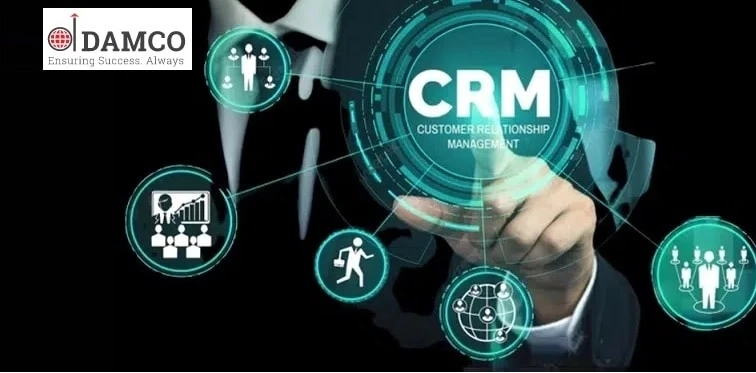Insurance CRM solutions offer an array of benefits, such as digitizing workflows, improving efficiencies, and enhancing customer experience. Also, one of the best benefits for your agency with a CRM is that the customer data is centralized within a single, accessible database. However, deploying a new CRM for your agency is not a walk in the park. The importance of planning a phased CRM implementation process is often undermined. But, in order to ensure a successful software deployment, you must follow the steps given below:
1. Picking the Perfect Insurance CRM System
For selecting the right CRM software, it is crucial to first understand the business goals and requirements. You must find out why you need a new CRM for insurance agents. Identify the areas that need improvement and the processes that can be optimized. then, figure out the kind of deployment you need. Large enterprises with sufficient technical and financial resources can go for an on-premise CRM, whereas new and small businesses can opt for a cloud-based one. Depending on their needs, insurers can also go for a customized CRM.
After thoroughly evaluating the requirements, you must spend time in research. Look into various CRM for insurance agencies and find one that meets your budget, and needs. Make sure the CRM you choose is customizable, flexible, and scalable. Moreover, one of the major advantages of CRM is improved efficiency. Hence check the user-friendliness of the software. It will help in ensuring a seamless transition and adoption.
2. Crafting an Implementation Strategy
Deploying an insurance CRM system can be a time-consuming process. Both the business owner and the team must be prepared for all stages of implementation. First and foremost, you must make sure that your business data is properly backed up. Apart from storing it in the cloud, you should also make hard copies of the system specs, customizations, and information to make sure that no crucial data gets lost during the transition.
Moreover, before transitioning to the new system, you must craft an action plan with a dedicated timeline and budget. According to the implementation timeline, the insurance agency can conduct employee training and ensure the staff is happy with the new software. By implementing the software in different stages, the resources and employees will not get overwhelmed. It will also help you reduce implementation mistakes and straighten the employee learning curve.
3. Assembling the CRM Implementation Team
Finding a dedicated project lead and an implementation team will make sure the deployment is successful. Identify a team leader with strong communication and leadership skills, who can direct the team efficiently, promptly resolve issues, and ensure the implementation is carried out timely.
Before deploying the new insurance CRM solution, set aside a specific time period for the staff to learn the intricacies of the system. Let the end-users familiarize themselves with the software and host Q&A sessions with CRM specialists to ensure all of their doubts get cleared. The success of any CRM depends on how well the employees use it. With proper training and a hands-on demo, you can ensure a successful CRM implementation.
4. Taking Inputs from End-Users
When training the employees, ensure to ask for feedback. Employee feedback will lend insights into what they truly think about the new software. Since the employees will be the ones using the CRM on a regular basis, they must be fully comfortable with the solution. Ask the staff how they feel about the new CRM and if they would want any more features or customizations.
It will help the employees voice their concerns and also lend you guidance. You can review the feedback and figure out areas where the CRM is lacking, and subsequently make changes. In case you are receiving frequent complaints regarding the same issue, consult the CRM vendor and find an appropriate resolution.
5. Reviewing the Metrics and Customizing Accordingly
While navigating the insurance CRM system deployment, you must review the reports and analytics to see how successful the implementation is. Look into the performance metrics to see if the software is meeting the expectations and goals.
It is essential for CRM systems to offer measurable inputs. Since CRM software captures and analyzes business activities, it offers better insights into several aspects of the business including customer relationships, sales, and marketing. Such valuable, data-driven insights enable you to make better business decisions and tweak the sales and marketing campaigns to meet customer needs. They also help you identify bottlenecks and inefficiencies. In order to make the move to a new insurance CRM system as seamless as possible, first, evaluate your business needs and then find a solution that best meets them.
Final Words
Bear the above-mentioned best practices in mind when implementing a new insurance software. It will help you keep the implementation on the right track. Research the best software deployment option for your agency, involve the end-users in the process, set a realistic timeline, and offer appropriate staff training. While implementing the CRM through stages will take time, the end result will be more effective and successful.
Picking the right CRM is a crucial part of the implementation process. You can look into the insurtech solutions offered by Damco Group and choose them as your CRM vendor.


